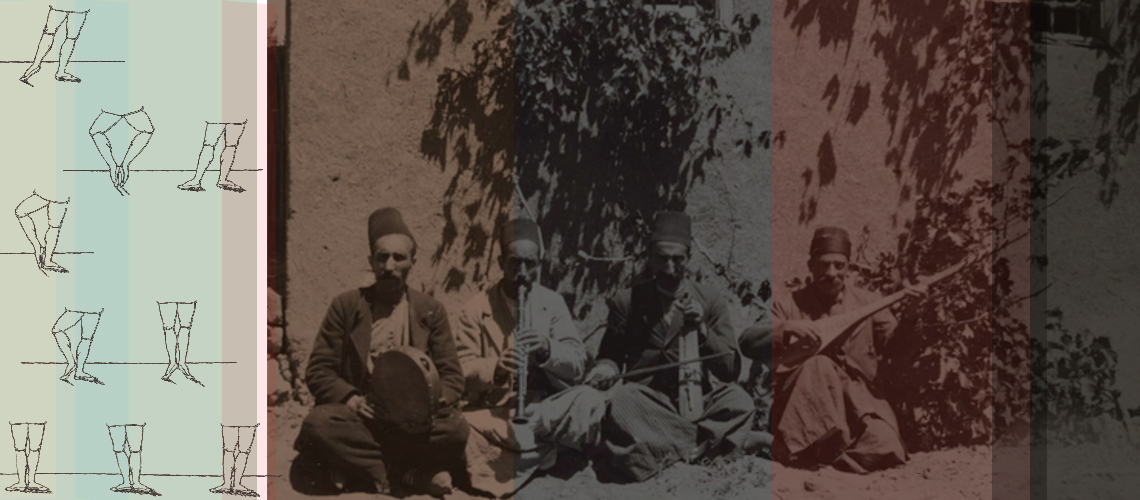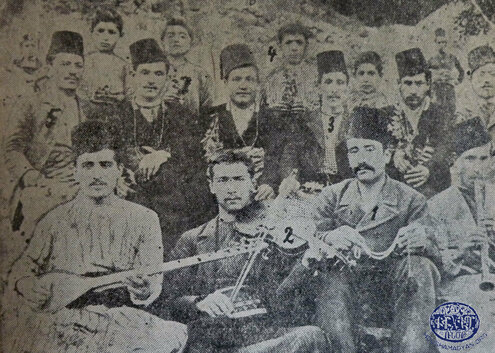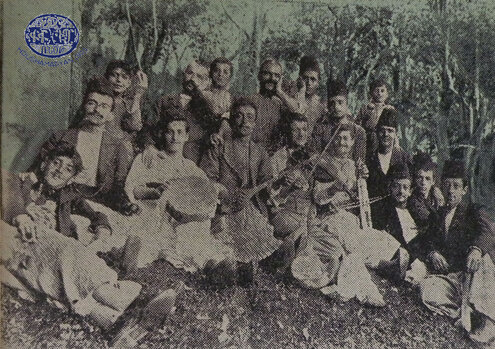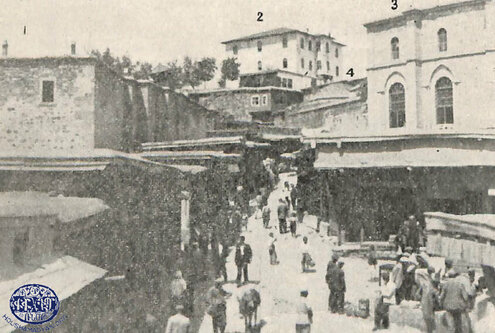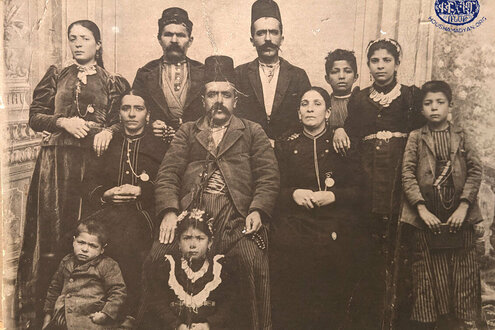Arapgir - Tamzara (dance)

16/07/22 (Last modified 16/07/22)
This section of our website aims to document and share performances of various traditional Armenian dances that have been preserved by Diasporan communities in the United States. To this end, Houshamadyan is partnering and collaborating with a group of Armenian dance experts who have produced appropriate dance notations for documentation. This group consists of Carolyn Rapkievian (of Bar Harbor, Maine), Susan and Gary Lind-Sinanian (of Watertown, Massachusetts), Tom Bozigian (of Los Angeles, California), and Robert Haroutunian (Sunyside, NY).
**********************************************************************
The Tamzara is a dance in a distinctive 9/8 rhythm which was widespread across much of the Armenian Plateau. Villages and towns had their own local versions. Some experts hypothesize that the dance originated in the village of Tamzara in the northeast region of Sepasdia/Sivas.
Arapgir is close to Kharpert/Harput and the Arapgirtsi Tamzara shows the influence of the duo or trio formation of the Kharperttsi Tamzara. This version of the Arapgir Tamzara is popular in the Pennsylvania/New York/New Jersey region of the United States.
Source: Sossy Kadian, Arsen Anoushian.
1) Arapgir. Group photograph of Armenian musicians and revelers, taken in the area called Antichay, near the city. Front row, left to right: an unidentified saz player, Hapet Mndjents (holding the kaman), Artin (Arsen’s son), and an unidentified clarinet player. Middle row, left to right: Hamazasb Tenekedjonts; and fourth from the left, Nshan Ejdaharian. Back row, third from the left, is Hadji (Arsen’s son and Artin’s brother). The others in the photograph are unidentified (Source: Vosgekedag (Golden River), Yearbook, Vol. 1, Sarkis Pakhdigian (ed.), Hayg Press, 1945, Beirut).
2) Arapgir. Group photograph of Armenian musicians and revelers, taken in the area called Antichay, near the city. Front row, sitting on the ground, left to right: Haroutyun, Hagop, Armenag Kalousdian (holding the tambourine), Sarkis Tevekelian (holding the saz), an unidentified violinist, Cherchi Vahan (holding the kamancheh), Minas Fereshetian, Arshag Kalousdian, Yetvart Bozadjian, and Mihran Yegavian (Source: Vosgekedag (Golden River), Yearbook, Vol. 1, Sarkis Pakhdigian (ed.), Hayg Press, 1945, Beirut).
Group photos, Arapgir. Armenian musicians and participants of festivities. First row, left to right: an unidentified tambourine player, Hapet Mndjents (playing the kamancheh), Artin (Arsen’s son, playing the kaman), and two unidentified musicians playing the other kamancheh and the saz (Source: Antranig L. Poladian, History Of Armenians of Arapgir [in Armenian], New York, 1969)
Music: The distinctive 9/8 rhythm is 1-2,1-2,1-2,1-2-3. The Arapgirtsi Tamzara dance phrase is three measures and has a unique melody in three measures to accompany it.
Style: Heavy strong movements, particularly from each group’s “leader.”
Formation: Small groups of two or three dancers in a “back-basket-hold” (arm behind the waist of one’s partner(s), grasping their further hand with one’s own hand).
Introduction: Count 1-2: Tap the ball of the right foot to the right (some dancers swivel the right foot on the right heel while tapping.) Count 3-4: swivel the right foot to tap the ball of the foot to the left diagonal." Count 5-6: Tap the ball of the right foot to the right. Count 7-8: swivel the right foot to tap the ball of the foot to the left diagonally. Count 9: Pause. Continue pattern until the ‘leader’ of group starts the forward step of the basic dance.
“Arapgiri Tamzara”
“Arabgeri Tamzara”, Arziv Orchestra (Philadelphia) c.1940
Haroutiun Koundourajian - violin
Krikor Kalayjian - oud
Krikor Nersesian - dumbeg
Tamzara - D. Perperian

Tamzara from Arapgir - Demonstration and Tutorial

Measures | Counts | Movements |
1 | 1-2 | Step forward on the right foot |
| 3-4 | Hop on the right foot |
| 5-6 | Step forward slightly on the left foot |
| 7 | Stamp once on the right foot |
| 8-9 | Pause |
2 | 1-2 | Step backward on right foot |
| 3-4 | Lift left foot slightly in front while hoping slightly on the right |
| 5-6 | Extend left foot forward to the left diagonally and tap the ball of the foot |
| 7 | Tap the ball of the left foot forward |
| 8-9 | Pause |
3 | 1-2 | Step backward on left foot |
| 3-4 | Lift right foot slightly in front while hoping slightly on the left |
| 5-6 | Extend right foot forward to the right diagonally and tap the ball of the foot |
| 7-8 | Tap the ball of the right foot forward |
| 9 | Pause |

1) A scene from the city of Arapgir (source: New Arapgir Newsletter, year 23, May 1949, number 32, New York).
2) The Ejdaharian family of Arapgir. Second from the left, in the back row, is Mgrdich Ejdaharian. Seated, in the center, first from the left, is Gilim Ejdaharian (Mgrdich’s wife, nee Zirakian). The others in the photograph are unidentified (source: Ejdaharian Family Collection, Philadelphia. Courtesy of Paul Vartan Sookiasian).

